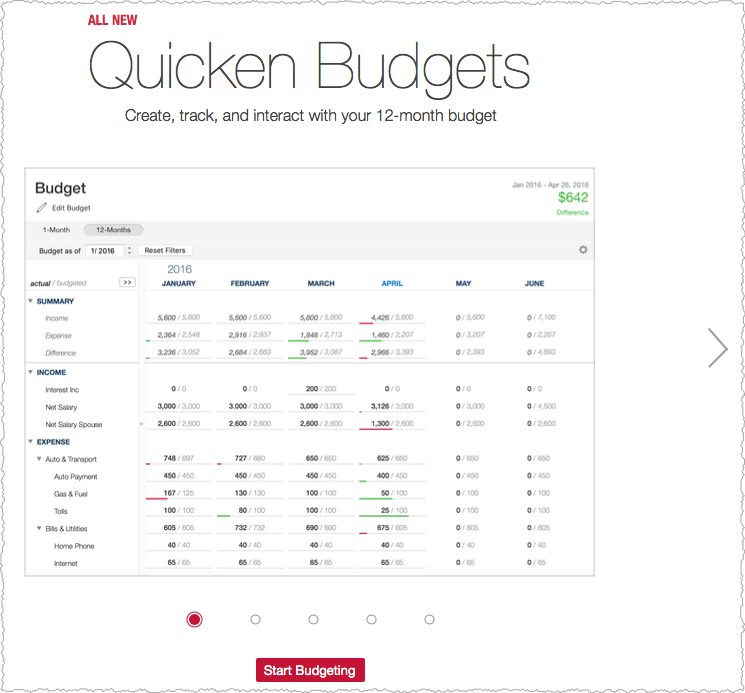
Quicken Essentiala For Mac Missing Transactions
I have an account that is missing about 14 months of transactions. I have to export these transactions from my bank and then import them into Quicken 2015 Mac. I have exported in both CSV and QIF but can't import either into an existing account. The QIF will apparently only work with a new account and the csv won't work at all.
If you create a DOS bootable drive and use a non-US keyboard, Rufus will attempt to select a keyboard layout according to the locale of your system. In that case, FreeDOS, which is the default selection, is recommended over MS-DOS, as it supports more keyboard layouts. Rufus Free Download Latest Version for Windows PC. Descargar rufus 1 4 10.
• Defining a list of trusted signers based on the author signature. For future previews, the tools will use only preview.NET Core SDKs. Visual Studio 2017 version 15.9 Security Advisory Notices Visual Studio 2017 version 15.9.4 Service Release -- released on December 11, 2018 An elevation of privilege vulnerability exists when the Diagnostics Hub Standard Collector Service improperly handles certain file operations.  • Defining a list of trusted NuGet.org package owners based on the metadata in the repository signature..NET Core Tools for Visual Studio Starting with this release, the.NET Core tools for Visual Studio will now default to using only the latest stable version of a.NET Core SDK that is installed on your machine for GA releases of Visual Studio.
• Defining a list of trusted NuGet.org package owners based on the metadata in the repository signature..NET Core Tools for Visual Studio Starting with this release, the.NET Core tools for Visual Studio will now default to using only the latest stable version of a.NET Core SDK that is installed on your machine for GA releases of Visual Studio.
After all the exceedingly positiveoh wait, it was incredibly negativeresponse to my, head of Intuit’s Quicken team, you think I’d run away from anything having to do with Quicken Essentials. But no, here I am again with a First Look at Quicken Essentials for Mac; I guess I’m a glutton for punishment or something. When I chatted with Patzer about Essentials, the product wasn’t out yet and I hadn’t seen it in person, so we spent a few minutes discussing the features of the new program.
Now, though, I’ve had the shipping version of Quicken Essentials on my machine for two days, and have given it what I consider the ultimate test: I fed it my Quicken 2006 data file, containing every financial transaction I’ve been involved with since 1993—nearly 17 years’ worth of data! (This is a depressing history to look through, so I try my best to avoid it. For instance, on August 22nd, 1994, I paid $753 for a 1GB hard drive—ouch!) What follows is not a review of Quicken Essentials—we’ll have that done in the near future. What it is is an overview of the new program, and my observations after putting it to use for two days. (For more on the history of Quicken and how Essentials fits in, read, by Jason Snell, about the release.) Overview As you may have read by now, Quicken Essentials is a ground-up rewrite of Quicken. Now developed in Cocoa, you get all the benefits of the best OS X development environment—Services work, for instance, and if you’re used to various text field shortcuts (Control-A to jump to the beginngin of a field), those all work too.
The look of the program is completely unlike any version of Quicken ever seen—the default view looks much more like a program from the iLife suite than something from Intuit. In Essentials, the program opens to an Overview window that could easily be described as such. Down the left hand side is a list of your accounts, along with some standardized tools at the top and reports at the bottom. Accounts are grouped by category, each identified by a unique icon. To the right is a summary of your recent spending (we had a tax bill due in January, which explains the large percentage to one item), along with a preview of upcoming bills and an overview of your spending against your budget (not yet set up in my screen shot).
Quicken Essentials overview window gives you a summary look at your financesThe new interface is undeniably nicer looking than the old; nobody who has used Quicken would ever describe its interface as elegant. There are some useful tools, too—Transactions presents what is essentially a global account register; you can use this to enter transactions in any account. At the top right of the Transactions window (and all registers) is a Spotlight-like search box. Type something in there, and Essentials filters the display to show only entries that match your search terms. The Category Explorer makes it really easy to see a summary of spending by category and drill down into a given category to see exactly where your money went.